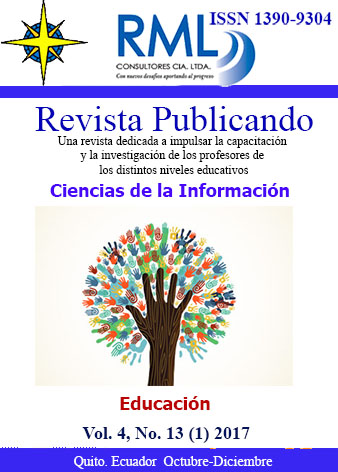Resumen
The present study lies in the mainstream of the paradigmatic semantics of language and deals with a semantic field structure. The urgency of the problem being studied is due to the fact that the field is a structural language organization that allows of studying the diverse aspects of lexical units. This paper briefly describes the main trends in the development of the theory of semantic fields in general and lexico-semantic and thematic groups in particular. The purpose of this work is structuring and analyzing the lexical and semantic field “Water” in English and Tatar, highlighting their common and specific structural and semantic features. The discrepancy in the semantics of equivalent words or the absence of any concepts in any culture being revealed by methods of continuous sampling and component analysis can be due to the natural features of the terrain, the living conditions and the way of life of the people.
Referencias
Grishina N.V. The Concept of Water in the Linguistic World Image (on the Basis of Nominative and Metaphorical Fields of the Russian Language of the 11th-20th centuries): author”™s thesis for candidate of philology: 10.02.01. – Saratov, 2002. – 24 p.
Kuznetsova E.V. About Intersecting Character of Lexico-Semantic Groups of Words // Semantics and Structure of a Sentence: Lexical and Syntactic Semantics. – Ufa, 1978. – P. 7-13.
Kleparski G.A. The tradition of field theory and the study of lexical semantic change. – Zeszyt, 2007. – v. 47. – pp. 187-205.
Longman essential activator Oxford: Addison Wesley Longman Limited, 1997.
Longman Dictionary of English Language and Culture. London: Addison Wesley Longman, 1998. ”” 1568 p.
Lieber R. Morphology and Lexical Semantics // Cambridge Studies in Linguistics. – Cambridge: Cambridge University Press, 2008. – 196 p.
Oxford Advanced Learner”™s Dictionary. – Oxford: Oxford University Press, 2004. – 1540 p.
Titov О.Ð. Lexico-Semantic Field “Water” in V. V. Nabokov”™s Story “Face” // Philology. Issues of Theory and Practice. – Tambov: Gramota, 2016. – â„– 9(63): in 3 parts. P. 1. – P. 171-173.
Татар теленең аңлатмалы ÑүзлеÐе. – Казан: МатбуÐат йорты нәшриÑÑ‚Ñ‹, 2005. – 848 б.
Vrazhnova I.G. Idiomatics in Cognitive and Linguocultural Aspects (Based on the Material of Phraseological Units with the Components of the Semantic Field “Water”) dissertation for candidate of philology: 10.02.19. – Saratov, 2004. – 237 p.
Vasiliev L.Ðœ. Modern Linguistic Semantics. – Ðœ.: Higher School, 1990. – 176 p.
Webster”™s Third New International Dictionary and Seven Language Dictionaiy. N-Y, 1993.
Usted es libre de:
Compartir — copiar y redistribuir el material en cualquier medio o formato
Adaptar — remezclar, transformar y construir a partir del material
La licenciante no puede revocar estas libertades en tanto usted siga los términos de la licencia
Bajo los siguientes términos:
Atribución — Usted debe dar crédito de manera adecuada, brindar un enlace a la licencia, e indicar si se han realizado cambios. Puede hacerlo en cualquier forma razonable, pero no de forma tal que sugiera que usted o su uso tienen el apoyo de la licenciante.
NoComercial — Usted no puede hacer uso del material con propósitos comerciales.
CompartirIgual — Si remezcla, transforma o crea a partir del material, debe distribuir su contribución bajo la lamisma licencia del original.
